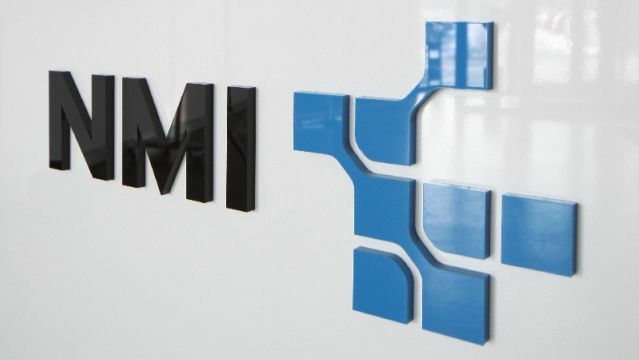"What matters is efficiency in destroying tumor cells"
CAR-T cells are expected to revolutionize cancer therapy. In order to obtain these helpers in the future more cost-effectively than before and directly at the site of treatment, several partners are currently working together on "mini-factories". Dr. Christian Schmees and Prof. Peter Loskill from the NMI Natural and Medical Sciences Institute in Reutlingen are researching how the individual effect of CAR-T cells can be predicted using organ-on-chip models.
How do CAR-T cells work in cancer therapy?
Dr. Schmees: CAR-T cells are a new type of tumor therapy in which the patient's immune cells, the body's own T lymphocytes, are genetically modified and can be used against the tumor.
What can your project do to change that?
Dr. Schmees: In the SolidCAR-T project, researchers from the Fraunhofer IPA in Stuttgart, the University Hospital Tübingen and the NMI in Reutlingen are working on decentralizing the production of CAR-T cells: This means that the production of the cells will take place at the site of treatment - in the clinic - and no longer at other production sites. On the one hand, we want to validate a process in our project that will make this possible. On the other hand, it is about quality control of the cell therapy product. Currently, there are few mechanisms for this. At the NMI, we have various technologies that we want to use to obtain information earlier in the production process about how effective the product is for the patient. In leukemia patients, for example, therapy with CAR-T cells has already been used successfully. However, there are always patients who respond little or not at all. If quality problems or indications that the therapy will not be efficient become apparent in the production process, changes could be incorporated. Of course, it is advantageous for the patient to be able to predict the success of the therapy at an early stage.
We are dealing with a natural, because cell therapeutic and also very individual product. How can quality be measured?
Prof. Loskill: In fact, classical quality control no longer applies to these novel modalities. The question is: Does the therapy work? Because of patient specificity, this is a question that cannot be answered generically: The product may work for one, but not for another. That is why the issue of quality control is different from that of classical pharmaceuticals.
What are "good" T lymphocytes?
Dr. Schmees: Of course, the efficiency of these cells in destroying tumor cells is crucial. On the one hand, we use patient-derived model systems, i.e. we actually work with tumor cells from the patient and not, for example, from the mouse. On the other hand, we use an organ-on-a-chip system: we do not simply place CAR-T cells and tumor cells together in a cell culture dish, but ensure perfusion with nutrients in the microfluidic on-chip system. This creates a model that makes it even easier to predict whether the CAR-T cells will actually have an effect on the patient's tumor.
How exactly does the organ-on-chip system work?
Prof. Loskill: Roughly speaking, you can imagine it like this: Cells or tissues are located in the body in a microenvironment in which many factors act on them. Complex biomechanical and biochemical processes take place. If we take these cells out and put them in a plastic dish, they do not behave the same way there as they do in the body. A cell functions like a cell because of many environmental factors. Organ-on-chip technology tries to replicate these outside the body. You'll never be able to replicate everything in the process, but the goal is to get the cells to react as much as possible the way they do in the human body. Blood vessel-like supply is an important aspect here, but so is modeling the tumor's microenvironment.
How do you work with organ-on-chip technology?
Dr. Schmees: We want to work as close to the patient as possible and therefore change the tumor as little as possible. We receive a sample of residual tumor tissue from the university hospital that remains after surgical removal and diagnosis. This is mechanically minced at our center and broken down into even smaller structures with the help of enzymes. The result is microtumors: three-dimensional structures consisting of different types of cells. We cultivate these microtumors in the laboratory using the chip:
Prof. Loskill: You can imagine this chip like a Lego block. It is a polymer 3D module: It has small channels built into it, the size of a hair, that mimic blood vessels. You can line them with the cells found in human blood vessels. In addition, there are chambers where the tissue is created. The microtumors are installed there. The whole thing is connected to a perfusion, which can be thought of as a syringe pump. You can use it to culture the tissue and flush the CAR-T cells through. In the model, we then look at how active the CAR-T cells are and whether they manage to kill the tumor.
What key findings do you hope to gain from this approach?
Dr. Schmees: There are many interesting things in this research project. For example, as in the patient, the CAR-T cells have to leave the bloodstream and get into the tissue. This is represented in the chip: You have a barrier like in the blood vascular system that these cells have to get through. The tissue through which the immune cells migrate to reach these microtumors is also replicated. So you simulate the tasks of the CAR-T cells in the patient. Among other things, we want to know: How long do they take to do this? If you put CAR-T cells and tumor cells together in a cell culture dish, it only takes a few hours for the tumor cells to be destroyed. But in the chip, as in the patient, they have to overcome several hurdles to reach the tumor. We will use microscopic techniques to observe what happens in these chips over a few days.
What happens when you have gathered this knowledge?
Dr. Schmees: Our project to map the entire development chain of the therapy product using the example of bile duct carcinoma will officially run until the end of 2022; however, this does not mean that our work will end then. For the patient-derived tumor models and the chip systems, we are working in close collaboration with the University Hospital in Tübingen. When we establish a project like this, we need oncologists to tell us what specifically helps them. That's why I believe that the close exchange with the clinics is an important basis. Collaborations in other directions will result from this: The approach of quality control or verification of therapeutic effect has significance in various aspects of patient therapy.
Prof. Loskill: Overall, we want to achieve a process in which there is no longer any need for central laboratories to be able to provide treatment locally quickly with a high chance of success.
About the project:
CAR-T cell therapies are already used in the individualized treatment of acute leukemias and lymphomas. A challenge is the non-standardized manual production process of these cells as well as the so far not very effective use of these cells in solid tumors. In the SolidCAR-T project, the interdisciplinary consortium of Fraunhofer IPA, the University Hospital of Tübingen and the NMI is mapping the entire chain from process development to automated and digitized production technology to new in vitro test methods for demonstrating efficacy and in-line quality control. Using bile duct carcinoma as an example, the project will examine how time-consuming laboratory processes can be implemented in a miniature factory. The state government is funding this work with 4.2 million euros under the umbrella of the Forum Gesundheitsstandort Baden-Württemberg.
The interview was published by the Forum Gesundheitsstandort Baden-Württemberg. Many thanks for the good cooperation with the editorial office Ressourcenmangel.






